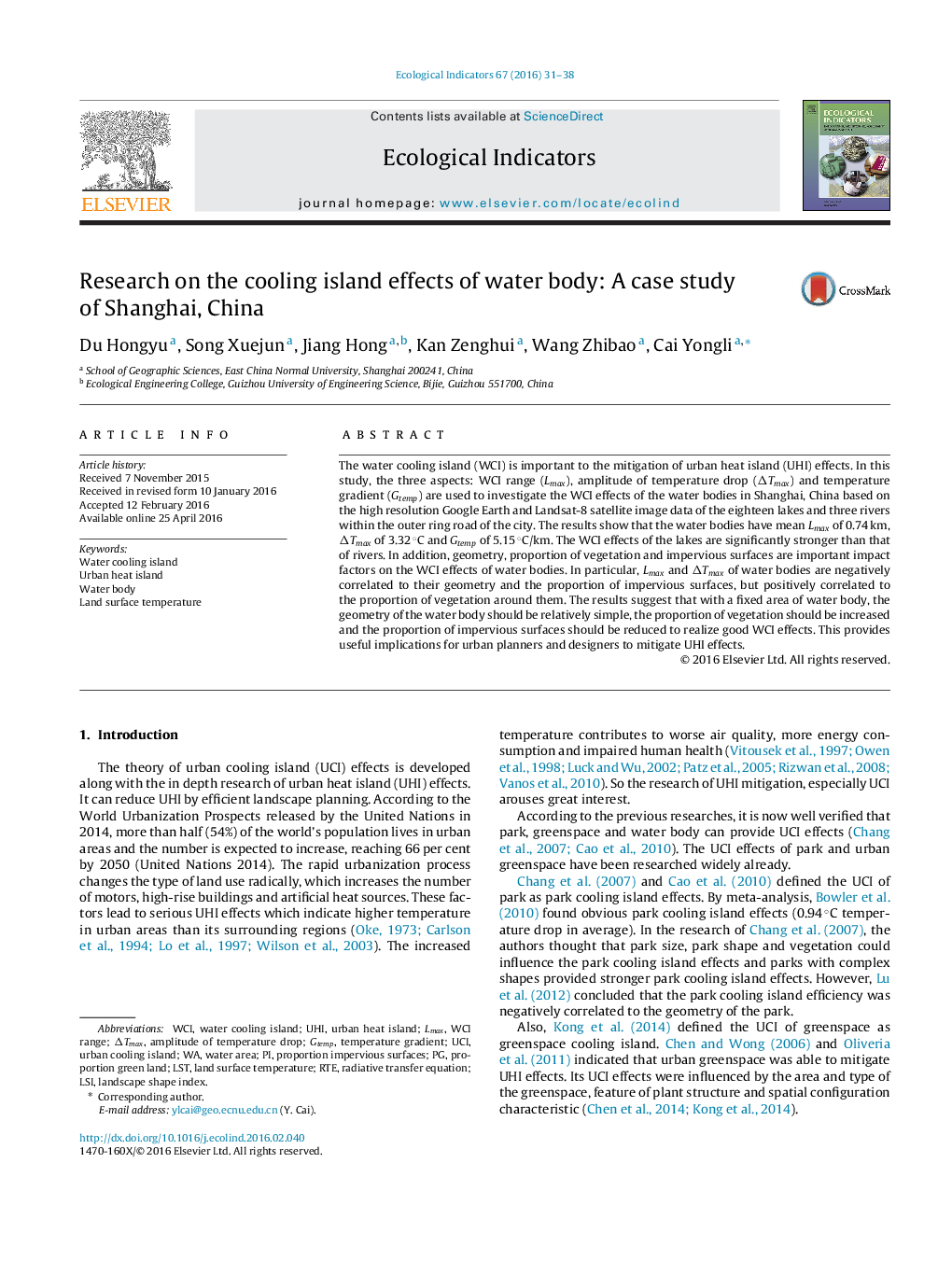| Article ID | Journal | Published Year | Pages | File Type |
|---|---|---|---|---|
| 4372851 | Ecological Indicators | 2016 | 8 Pages |
The water cooling island (WCI) is important to the mitigation of urban heat island (UHI) effects. In this study, the three aspects: WCI range (Lmax), amplitude of temperature drop (ΔTmax) and temperature gradient (Gtemp) are used to investigate the WCI effects of the water bodies in Shanghai, China based on the high resolution Google Earth and Landsat-8 satellite image data of the eighteen lakes and three rivers within the outer ring road of the city. The results show that the water bodies have mean Lmax of 0.74 km, ΔTmax of 3.32 °C and Gtemp of 5.15 °C/km. The WCI effects of the lakes are significantly stronger than that of rivers. In addition, geometry, proportion of vegetation and impervious surfaces are important impact factors on the WCI effects of water bodies. In particular, Lmax and ΔTmax of water bodies are negatively correlated to their geometry and the proportion of impervious surfaces, but positively correlated to the proportion of vegetation around them. The results suggest that with a fixed area of water body, the geometry of the water body should be relatively simple, the proportion of vegetation should be increased and the proportion of impervious surfaces should be reduced to realize good WCI effects. This provides useful implications for urban planners and designers to mitigate UHI effects.
